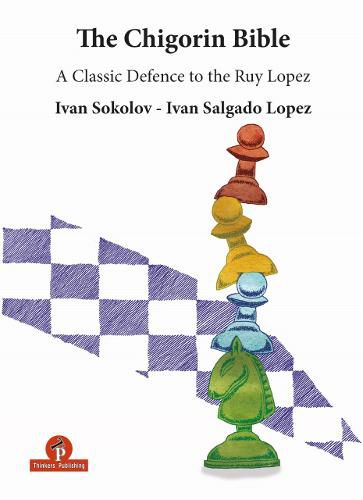Readings Newsletter
Become a Readings Member to make your shopping experience even easier.
Sign in or sign up for free!
You’re not far away from qualifying for FREE standard shipping within Australia
You’ve qualified for FREE standard shipping within Australia
The cart is loading…






The Chigorin Variation is one of the oldest variations of the Ruy Lopez, ‘in- vented’ (according to my database) at the Monte Carlo tournament in 1902 by Carl Schlechter in his game versus Siegbert Tarrasch. Doing our research for this book I was surprised to discover that in the early years of the development of the Chigorin Variation, Black often intentionally kept his king in the centre by opting for 8…Na5 9. Bc2 c5 instead of 8…0-0, trying to be flexible and keeping extra options. The drawback was that White was not obliged to spend time on h2-h3, as he was on 9.h3 in a regular move or- der. Nevertheless this unusual more order was tried with Black by Capablanca, Lasker, Botvinnik, Euwe, Rubinstein and Reshevsky, amongst others. How- ever, sometime in the late 1940s, this flexible plan more or less disappeared from Grandmaster practice, so I did not include it in the games in this book.
$9.00 standard shipping within Australia
FREE standard shipping within Australia for orders over $100.00
Express & International shipping calculated at checkout
The Chigorin Variation is one of the oldest variations of the Ruy Lopez, ‘in- vented’ (according to my database) at the Monte Carlo tournament in 1902 by Carl Schlechter in his game versus Siegbert Tarrasch. Doing our research for this book I was surprised to discover that in the early years of the development of the Chigorin Variation, Black often intentionally kept his king in the centre by opting for 8…Na5 9. Bc2 c5 instead of 8…0-0, trying to be flexible and keeping extra options. The drawback was that White was not obliged to spend time on h2-h3, as he was on 9.h3 in a regular move or- der. Nevertheless this unusual more order was tried with Black by Capablanca, Lasker, Botvinnik, Euwe, Rubinstein and Reshevsky, amongst others. How- ever, sometime in the late 1940s, this flexible plan more or less disappeared from Grandmaster practice, so I did not include it in the games in this book.